Results 1 to 1 of 1
Thread Information
Users Browsing this Thread
There are currently 1 users browsing this thread. (0 members and 1 guests)
-
05-20-2020, 01:05 PM #1
$1.28 billion wall project on Arizona border goes to firm favored by Trump
Curt Prendergast May 20, 2020 Updated 2 hrs ago
Federal officials awarded a $1.28 billion border wall project in Southern Arizona to a company favored by President Trump, five months after a previous contract led to accusations of improper influence and a probe by the Defense Department’s inspector general.
The Army Corps of Engineers awarded the $1.28 billion project on May 6 to Fisher Sand and Gravel, a North Dakota-based company with offices in Tempe.
The funds will go toward building about 42 miles of border wall, most of which will run from Nogales to the eastern boundary of the Tohono O’odham Nation, according to the Corps.
Tommy Fisher, head of Fisher Sand and Gravel, led a wide-ranging campaign to persuade Trump and federal officials to award wall contracts to his company.
Fisher touted his company’s wall design on numerous conservative news outlets frequently watched by Trump, paid lobbyists $145,000 to discuss the border wall with lawmakers, and invited Corps officials to watch his crews build a privately funded border wall.
Trump repeatedly urged Corps officials to award wall contracts to Fisher last year, despite the company’s initial designs not meeting federal standards, the Washington Post reported.
When Trump told advisers last month that he wanted the wall painted black to make it more intimidating and harder to climb in hot weather, he directed them to consult with Fisher.
The inspector general audit came after Fisher Sand and Gravel was awarded a contract in early December worth up to $400 million to build 31 miles of border wall on the Cabeza Prieta National Wildlife Refuge southwest of Tucson.
News of the contract immediately led Democratic lawmakers to raise concerns about improper influence by Trump.
The Defense Department’s inspector general launched an audit less than two weeks later. That audit is ongoing, according to the public affairs office of the inspector general.
The Corps maintains that all procurement laws were followed with both the December contract award to Fisher and the May 6 award, says a statement from the Corps’ public affairs office.
In mid-2019, the company was included in a pre-qualified pool of contractors for border wall projects. The May 6 project was awarded to Fisher through a competitive process among those contractors.
Fisher Sand and Gravel did not respond to an inquiry from the Star.
The wall along Arizona’s border with Mexico is made of 30-foot-tall steel poles, known as bollards, filled with concrete. The bollards are 6 inches in diameter and separated from each other by 4 inches of space.
The wall is topped with a steel plate meant to thwart climbers. At a later date, lights and cameras will be installed, along with a sensor system in the ground.
The wall was a centerpiece of Trump’s presidential campaign in 2016, and officials are pushing to complete as many miles of wall as possible before the election in November.
Acting Department of Homeland Security Secretary Chad Wolf said last week during a visit to Tucson that he expects to see as many as 400 miles of wall completed this year. So far, about 180 miles have been built since Trump took office.
Federal officials plan to build nearly 140 miles of border wall near Tucson and another 100 miles near Yuma. Construction began last year and about 50 miles of wall have been built in Arizona, with crews adding more wall every day.
The May 6 project includes seven segments. The bulk of the project starts near Nogales and runs west for 38 miles along the Coronado National Forest and Buenos Aires National Wildlife Refuge until it reaches the eastern boundary of the Tohono O’odham Nation, with small breaks separating the segments.
Another 4 miles of wall will go up about 10 miles east of Nogales. A section of wall measuring two-tenths of a mile will go up at or near the Santa Cruz River.
A bridge was built over the river last year to help Border Patrol agents drive through the area.
Fisher Sand and Gravel also was awarded a $7.6 million contract on April 15 to build 800 feet of wall near Yuma.
The average cost per mile of the May 6 project is $30 million, much higher than the $20 million average for most other wall projects in Southern Arizona.
“While there may be similarities between projects, each project cost is contingent upon its unique characteristics, such as geotechnical, topographical, hydrological and hydraulic, underground utilities, final real estate access, and the cost of materials and labor,” said Corps spokesman Jay Field.
To speed up wall construction, the Department of Homeland Security waived numerous laws dealing with the environment, historical preservation, and other issues. In February, the department waived several procurement laws to further speed up construction on 177 miles of the border in California, Arizona, New Mexico and Texas.
The waivers of procurement laws “had no effect” on the May 6 award to Fisher Sand and Gravel, Field said, citing the competitive award process.
So far, roughly $3.1 billion of Defense Department funds have been awarded for wall projects on the border near Tucson, according to figures provided by the Corps. Only a handful of the planned miles of wall near Tucson do not yet have a contract.
Southwest Valley Constructors, an affiliate of the construction giant Kiewit, was awarded $524 million in late March to build about 24 miles of wall in Cochise County.
The company was awarded $1.3 billion last year to build 63 miles of wall in Cochise County and on the Organ Pipe Cactus National Monument and Cabeza Prieta.
In contrast with Fisher Sand and Gravel, Southwest Valley Constructors has kept a low profile in terms of publicly courting federal officials.
Nearly $700 million of Defense Department funds were awarded to build about 73 miles of wall in the Yuma area, according to the Corps.
Other projects near Yuma were funded by congressional appropriations.
U.S. – Mexico border near Douglas, Ariz.
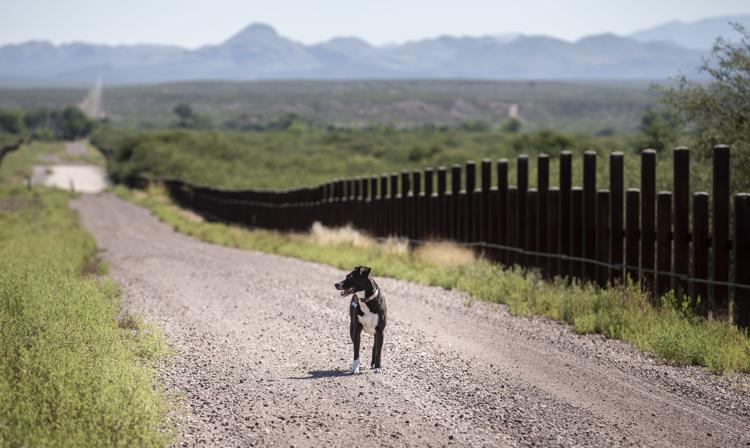
A dog stands on a road commonly used by Border Patrol near Slaughter Ranch Museum Thursday, Sept. 27, 2019.
Josh Galemore / Arizona Daily Star
U.S. – Mexico border near Douglas, Ariz.
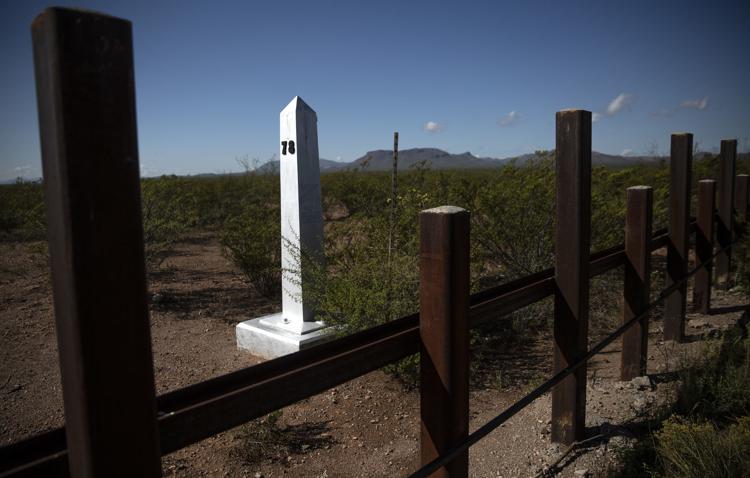
A border monument on the Mexico side of the border seen east of Douglas Thursday, Sept. 27, 2019.
Josh Galemore / Arizona Daily Star
U.S. – Mexico border near Douglas, Ariz.
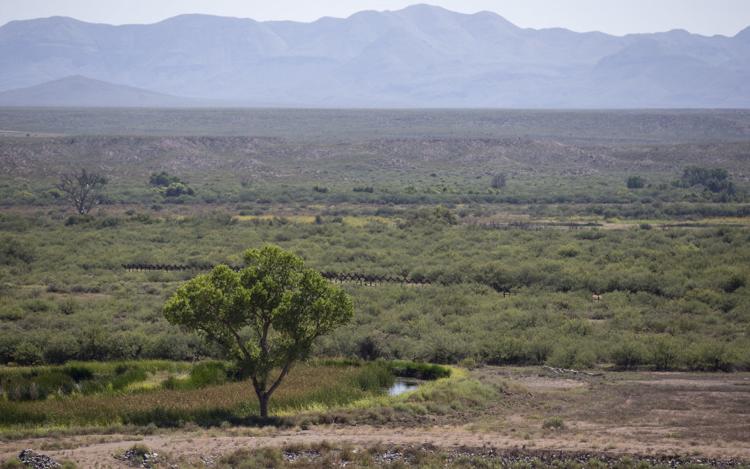
The San Bernardino National Wildlife Refuge sits on the U.S. side of the border with Mexico east of Douglas Thursday, Sept. 27, 2019.
Josh Galemore / Arizona Daily Star
U.S. – Mexico border near Douglas, Ariz.
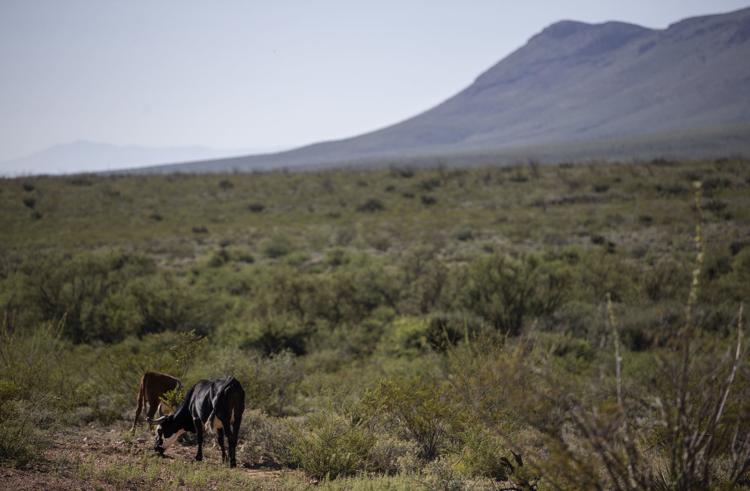
A bull and cow graze near the site of new wall construction east of Douglas Thursday, Sept. 27, 2019.
Josh Galemore / Arizona Daily Star
U.S. – Mexico border near Douglas, Ariz.
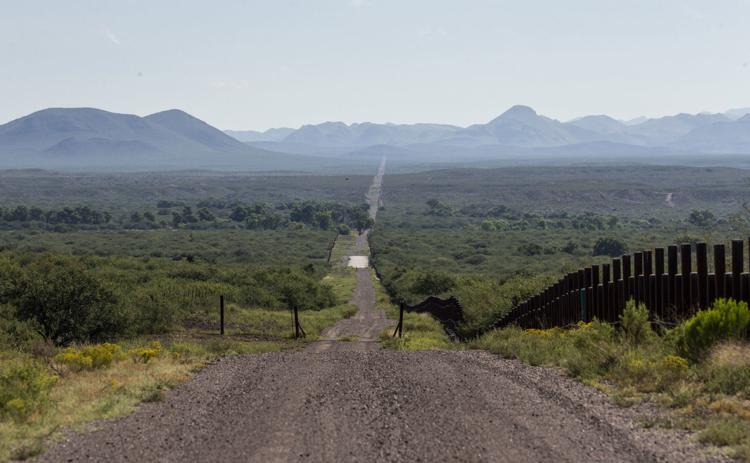
The border seen stretching from hills east of Douglas into the Guadalupe Mountains Thursday, Sept. 27, 2019.
Josh Galemore / Arizona Daily Star
U.S. – Mexico border near Douglas, Ariz.
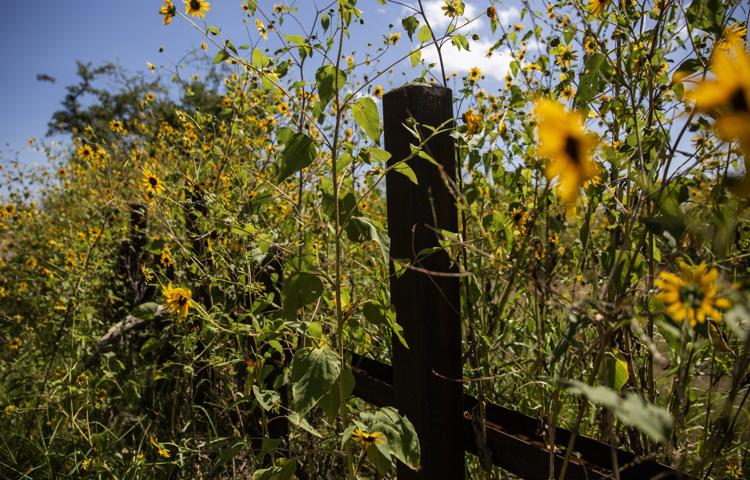
Flowers grow around border fencing near the San Bernardino National Wildlife Refuge Thursday, Sept. 27, 2019.
Josh Galemore / Arizona Daily Star
U.S. – Mexico border near Douglas, Ariz.
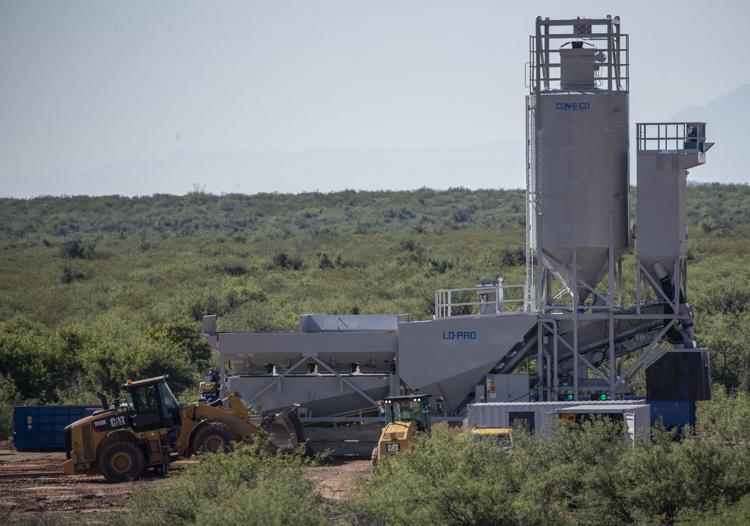
Construction equipment set up at the site of new border wall construction on the US/Mexico border east of Douglas Thursday, Sept. 27, 2019.
Josh Galemore / Arizona Daily Star
U.S. – Mexico border near Douglas, Ariz.
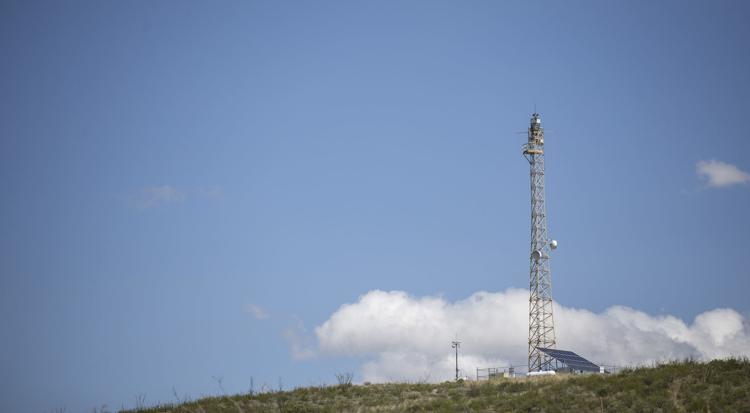
A Border Patrol tower on the hills east of Douglas Thursday, Sept. 27, 2019.
Josh Galemore / Arizona Daily Star
U.S. – Mexico border near Douglas, Ariz.

Memorials place on graves at Julia Page Memorial Park in Douglas which sits along the U.S./Mexico border Thursday, Sept. 27, 2019.
Josh Galemore / Arizona Daily Star
U.S. – Mexico border near Douglas, Ariz.
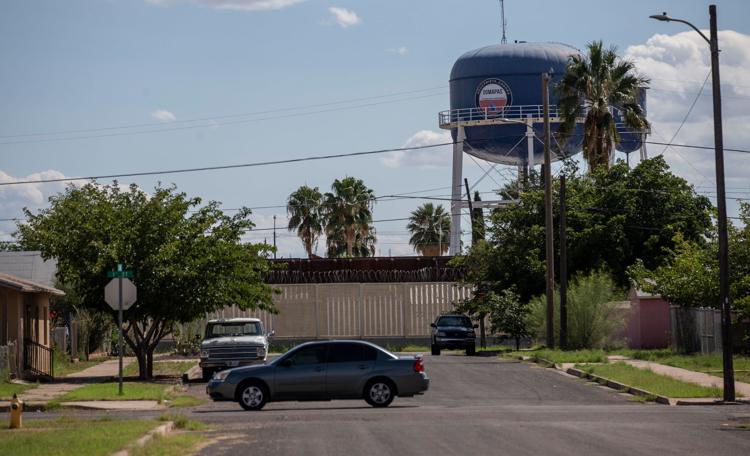
A car drives through Douglas on a road parallel to the U.S./Mexico border wall Thursday, Sept. 27, 2019.
Josh Galemore / Arizona Daily Star
https://tucson.com/news/local/1-28-b...09c720ec0.htmlSupport our FIGHT AGAINST illegal immigration & Amnesty by joining our E-mail Alerts at https://eepurl.com/cktGTn
Similar Threads
-
House Panel Would Provide $5 Billion for Trump Border Wall
By Jean in forum illegal immigration News Stories & ReportsReplies: 0Last Post: 07-18-2018, 05:13 PM -
Trump to Demand $2.5 billion for Border Wall in 2019
By Jean in forum illegal immigration News Stories & ReportsReplies: 2Last Post: 05-22-2018, 07:26 AM -
Trump wants $18 billion from Congress for border wall
By JohnDoe2 in forum illegal immigration News Stories & ReportsReplies: 8Last Post: 01-06-2018, 02:37 AM -
Bill allocates $1.6 billion for Trump’s border wall
By Jean in forum illegal immigration News Stories & ReportsReplies: 1Last Post: 07-11-2017, 06:22 PM -
Trump: Border wall will cost $8 billion
By Jean in forum General DiscussionReplies: 2Last Post: 02-09-2016, 06:45 PM


 1Likes
1Likes LinkBack URL
LinkBack URL About LinkBacks
About LinkBacks




 Reply With Quote
Reply With Quote


Mike Johnson betrays border security for more foreign aid
04-18-2024, 10:31 PM in illegal immigration News Stories & Reports